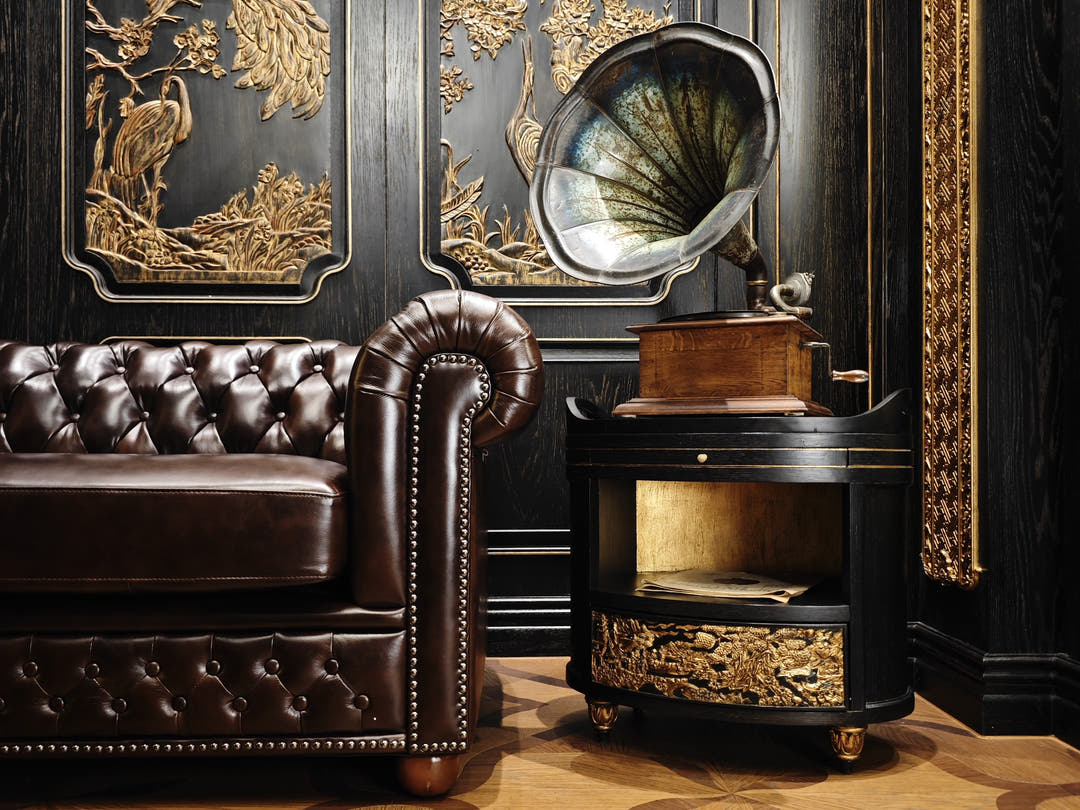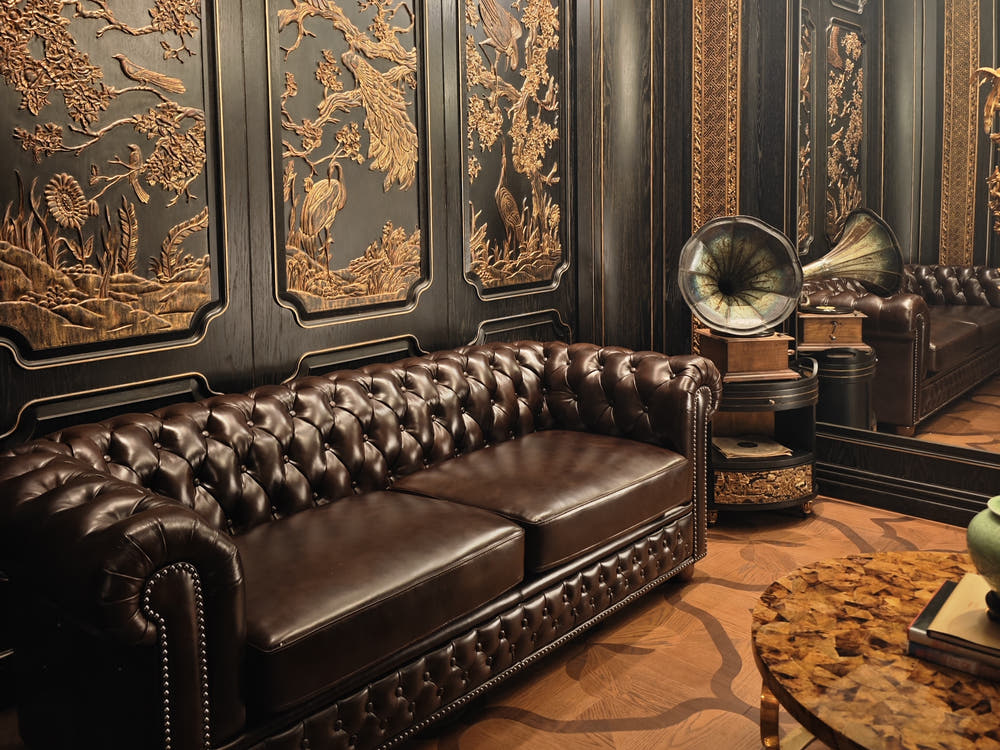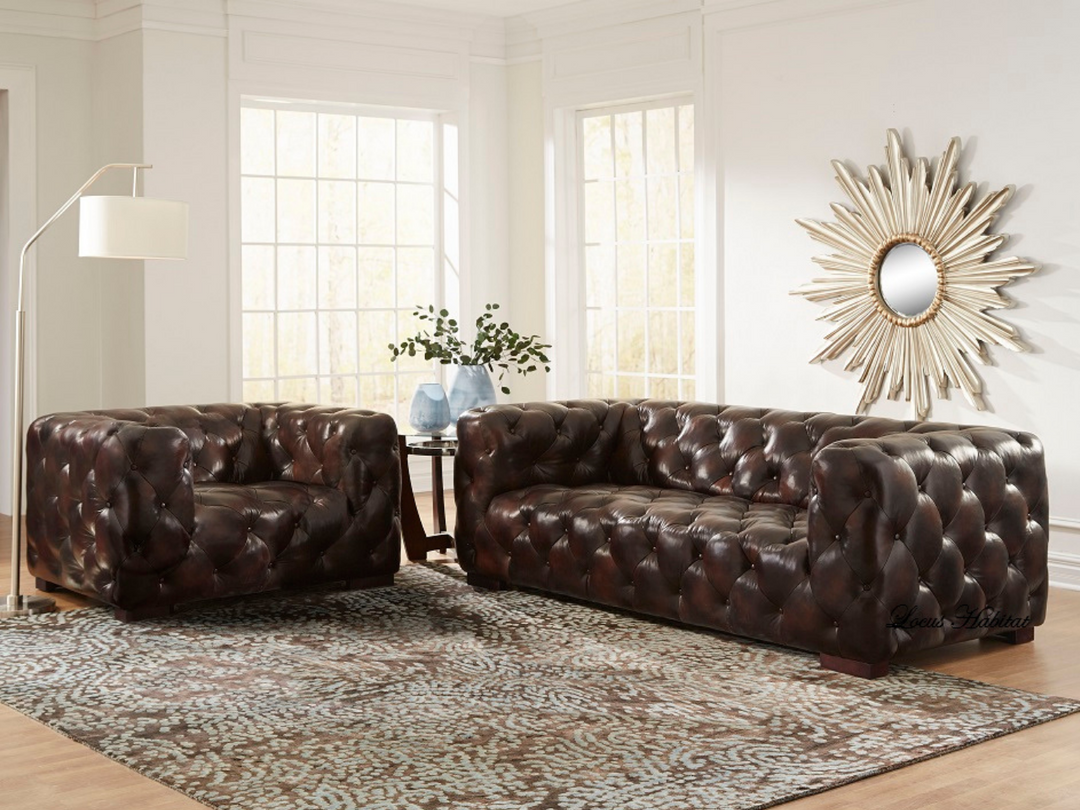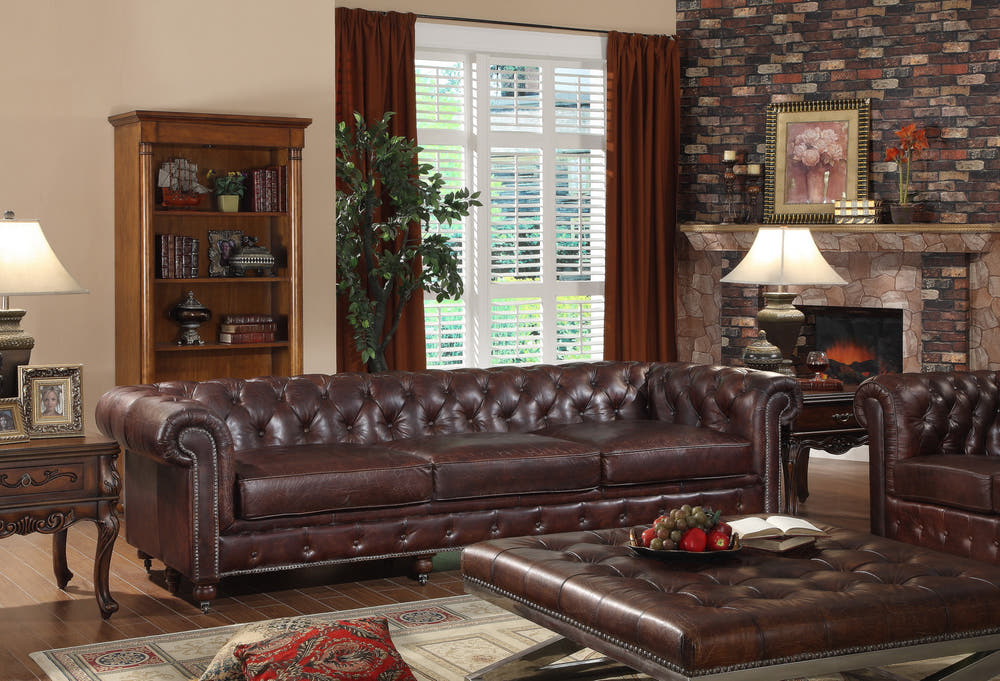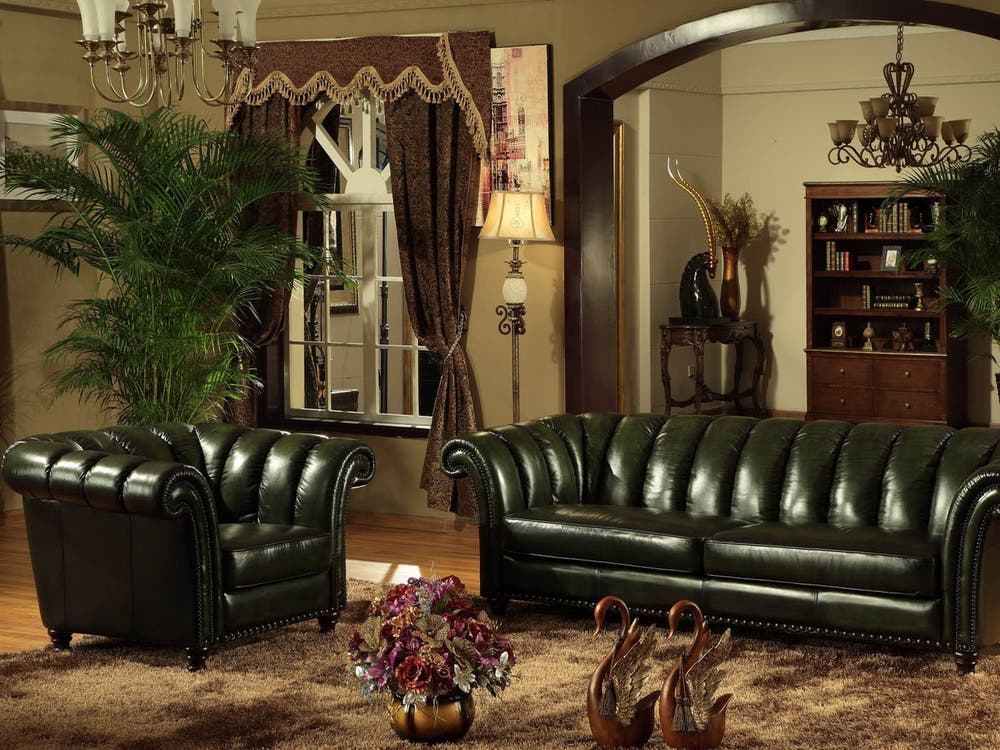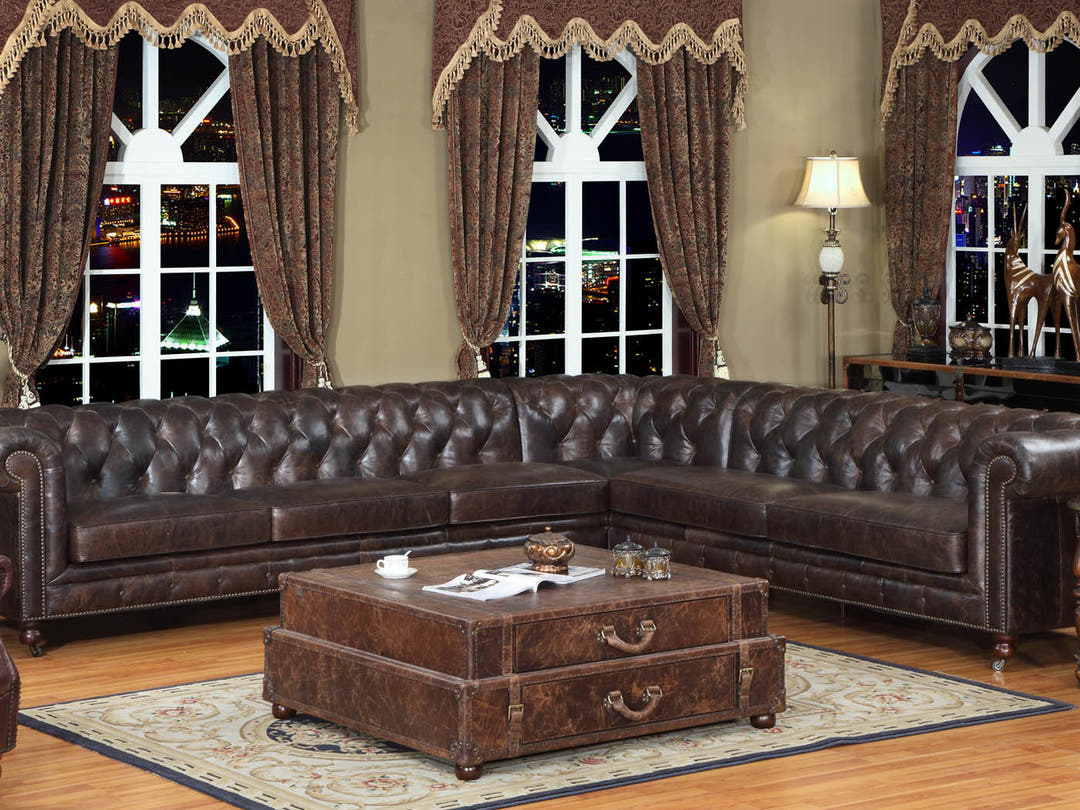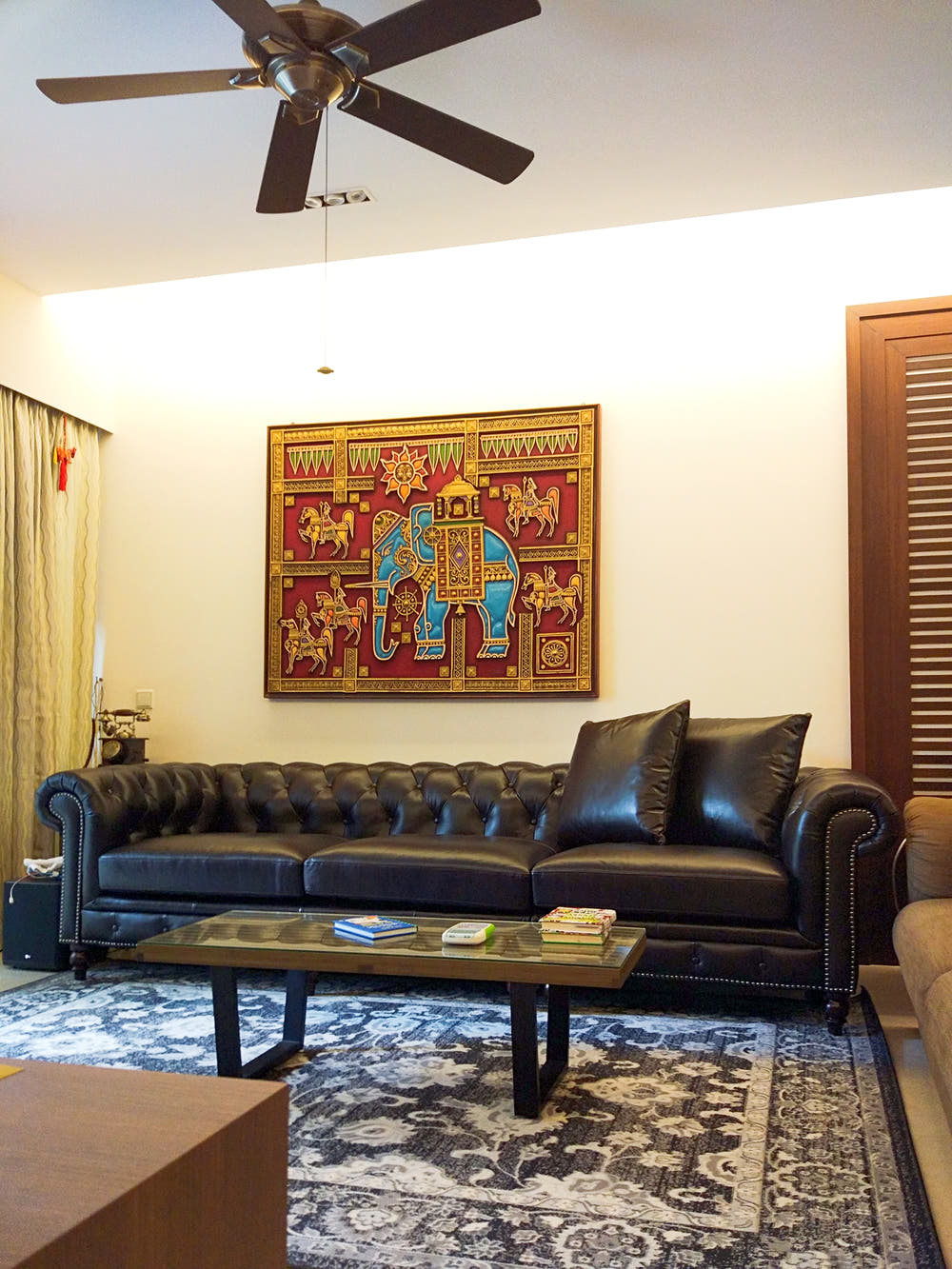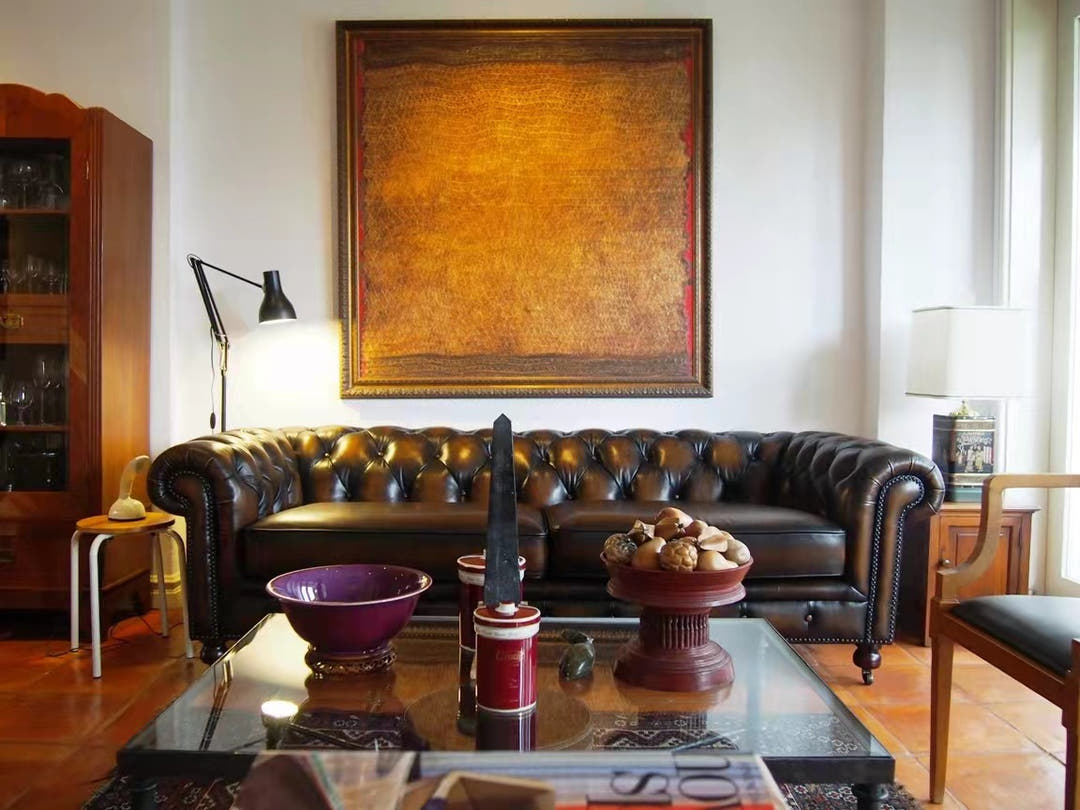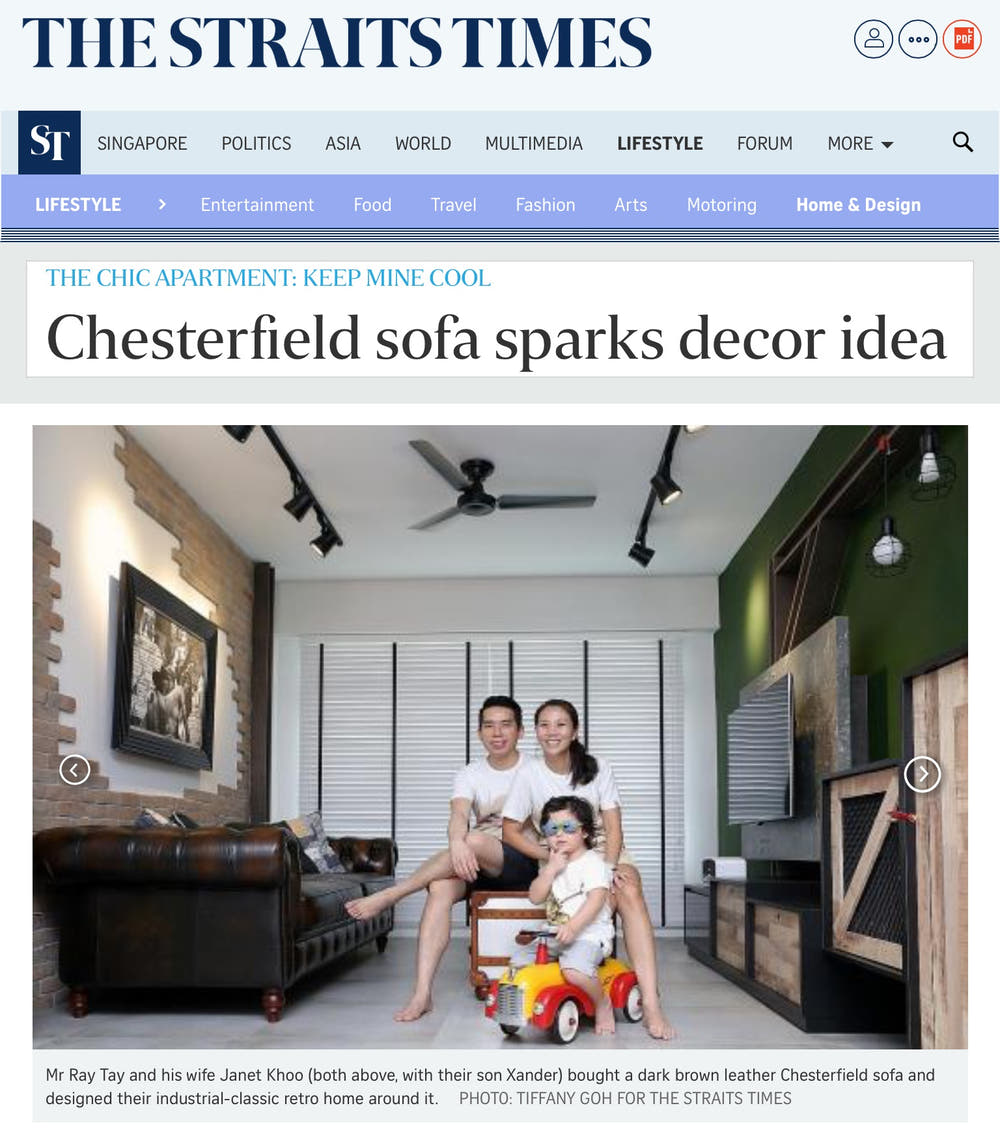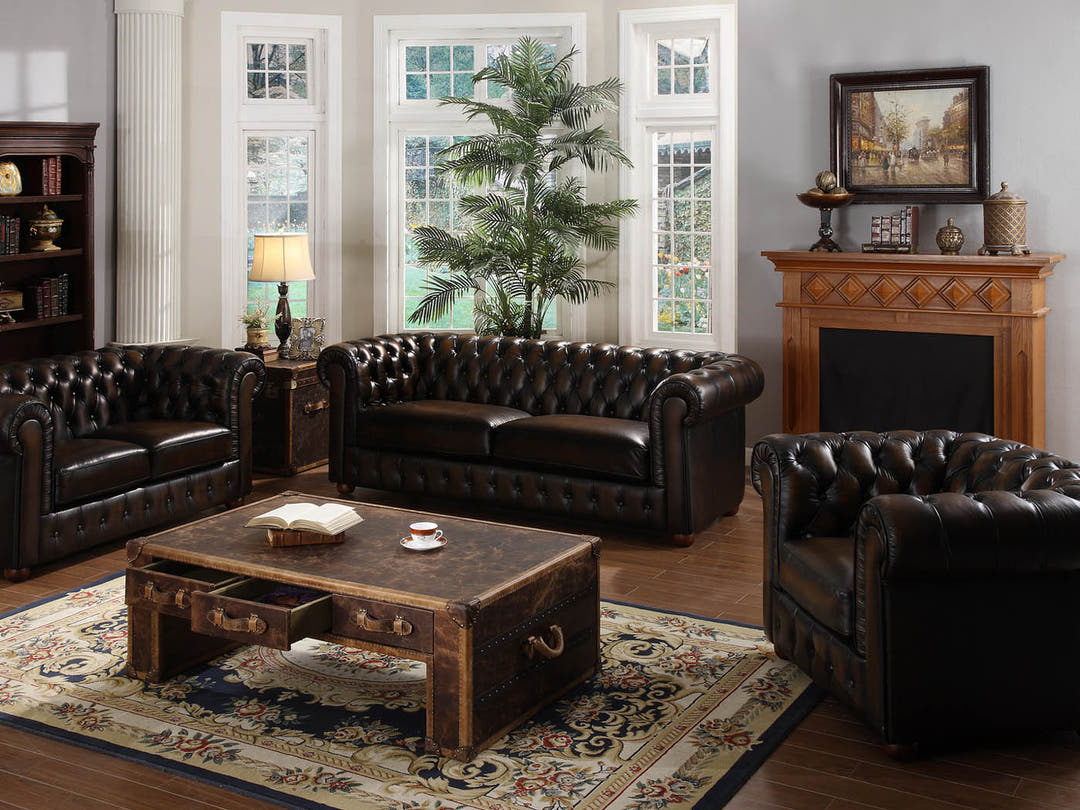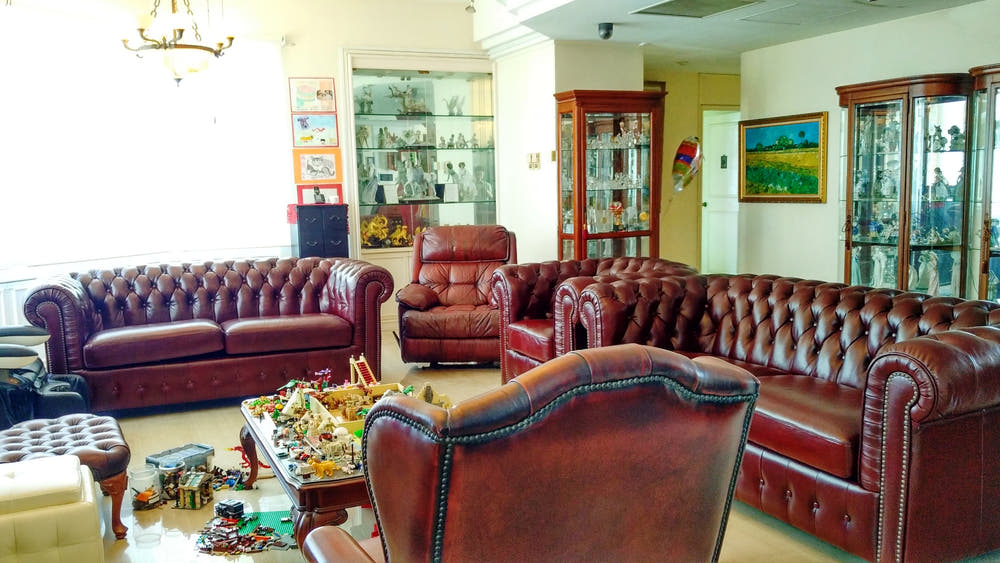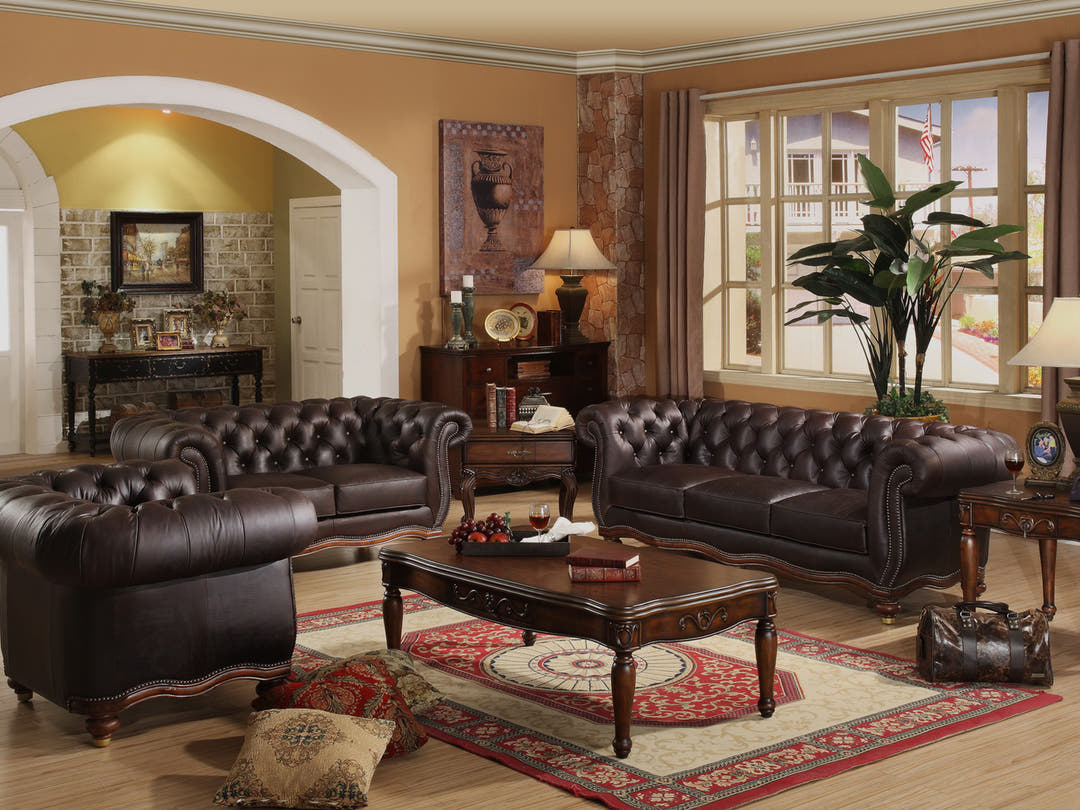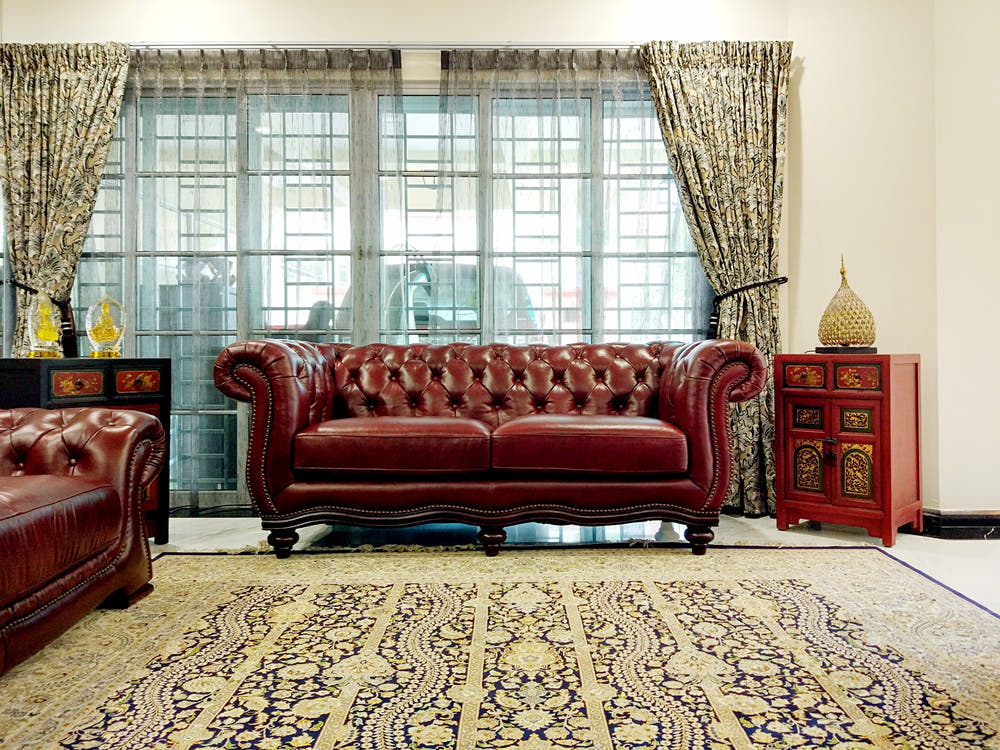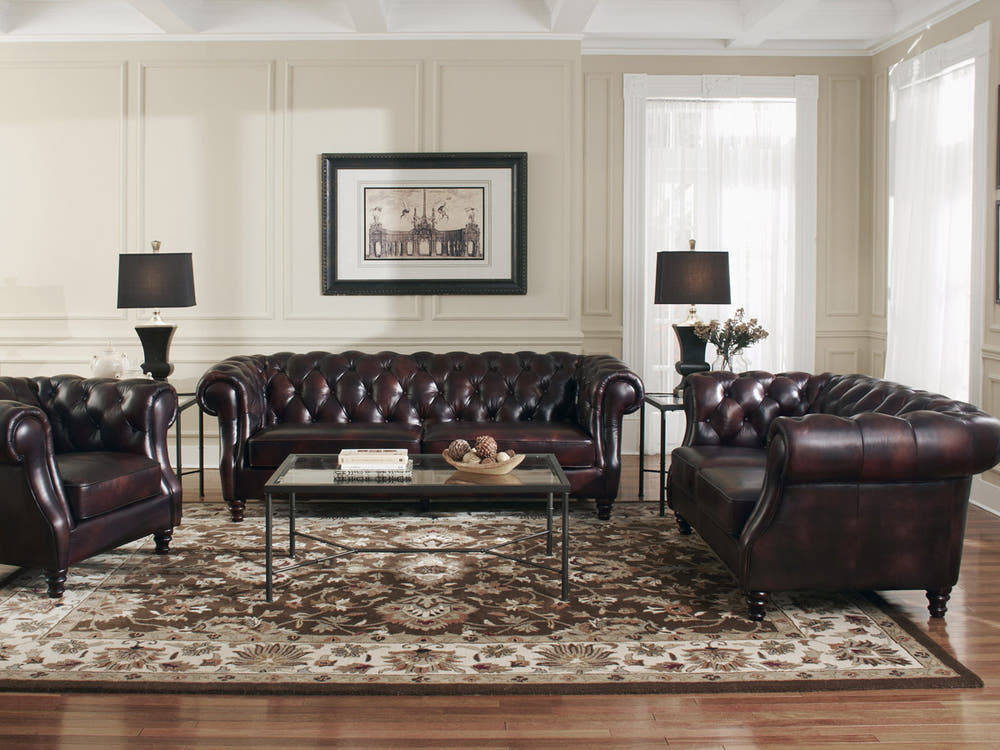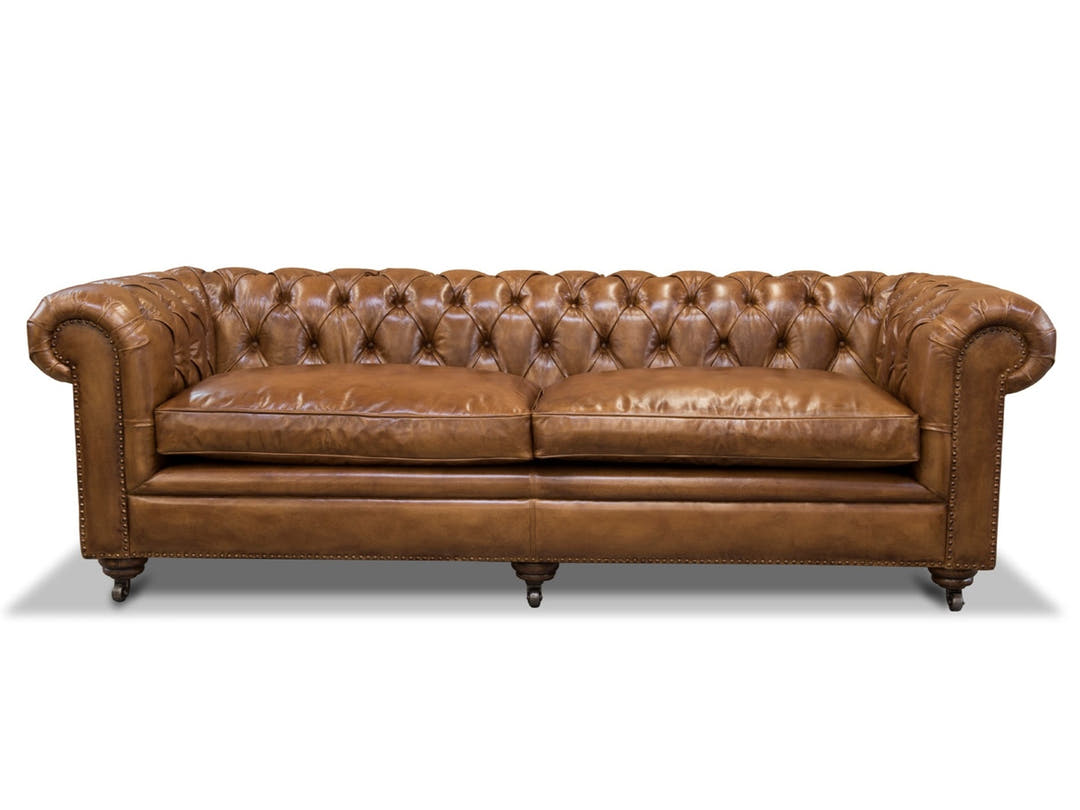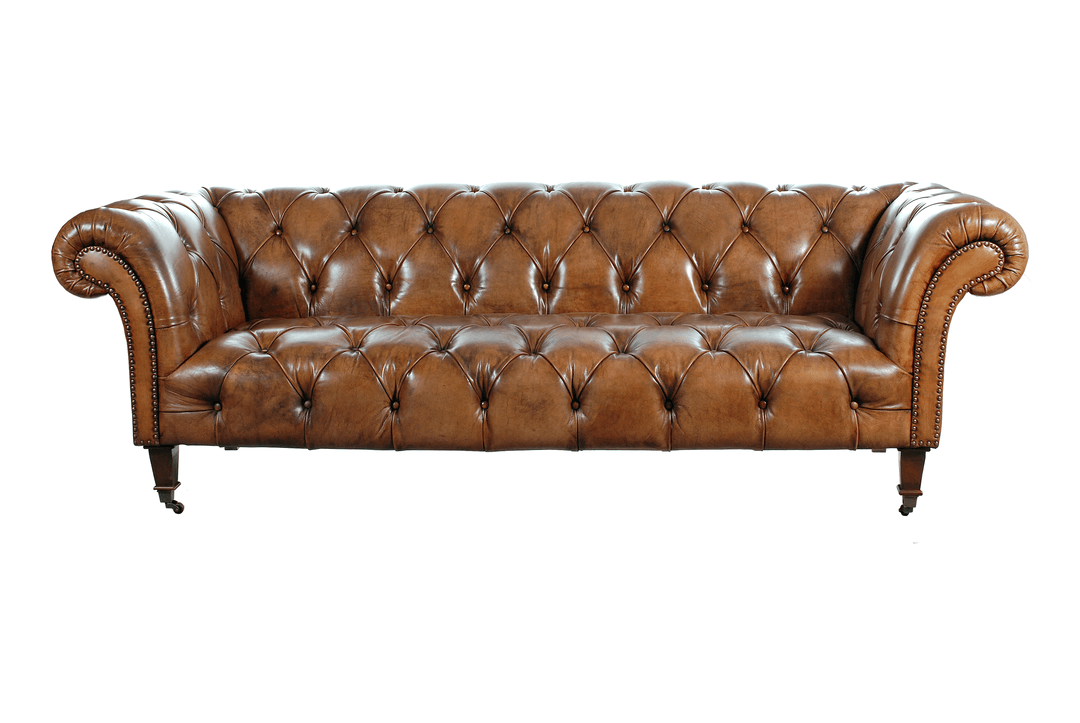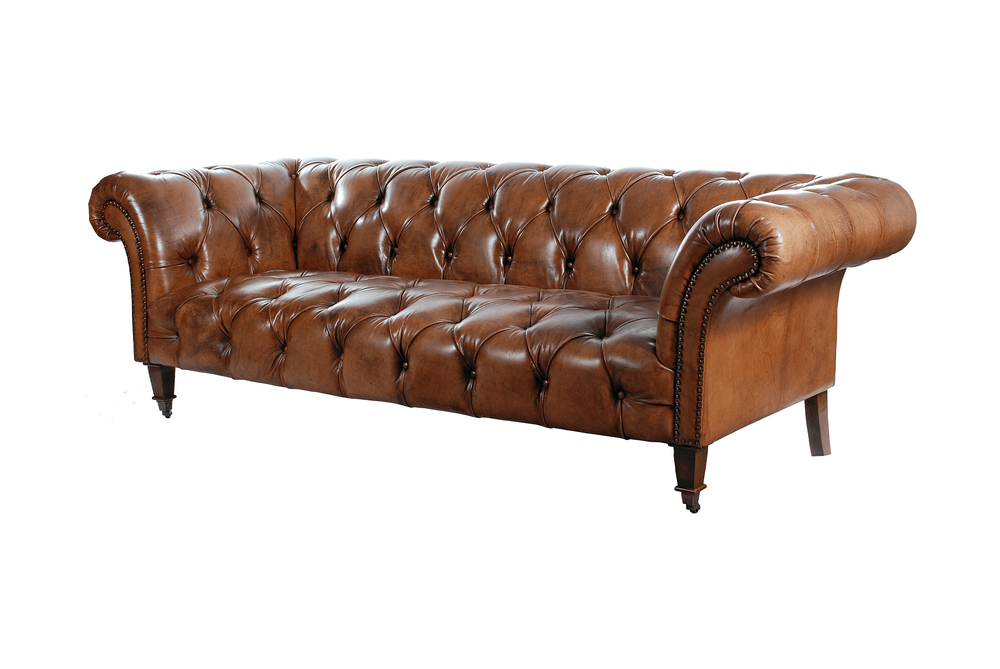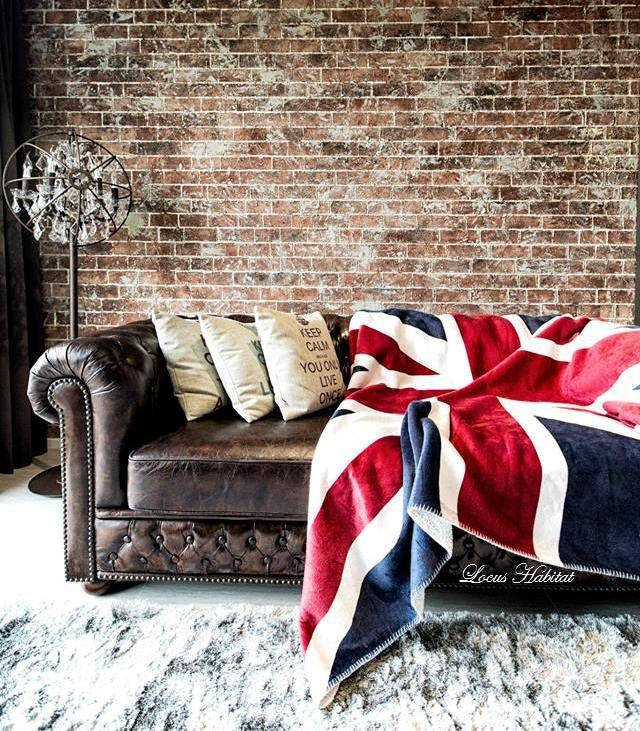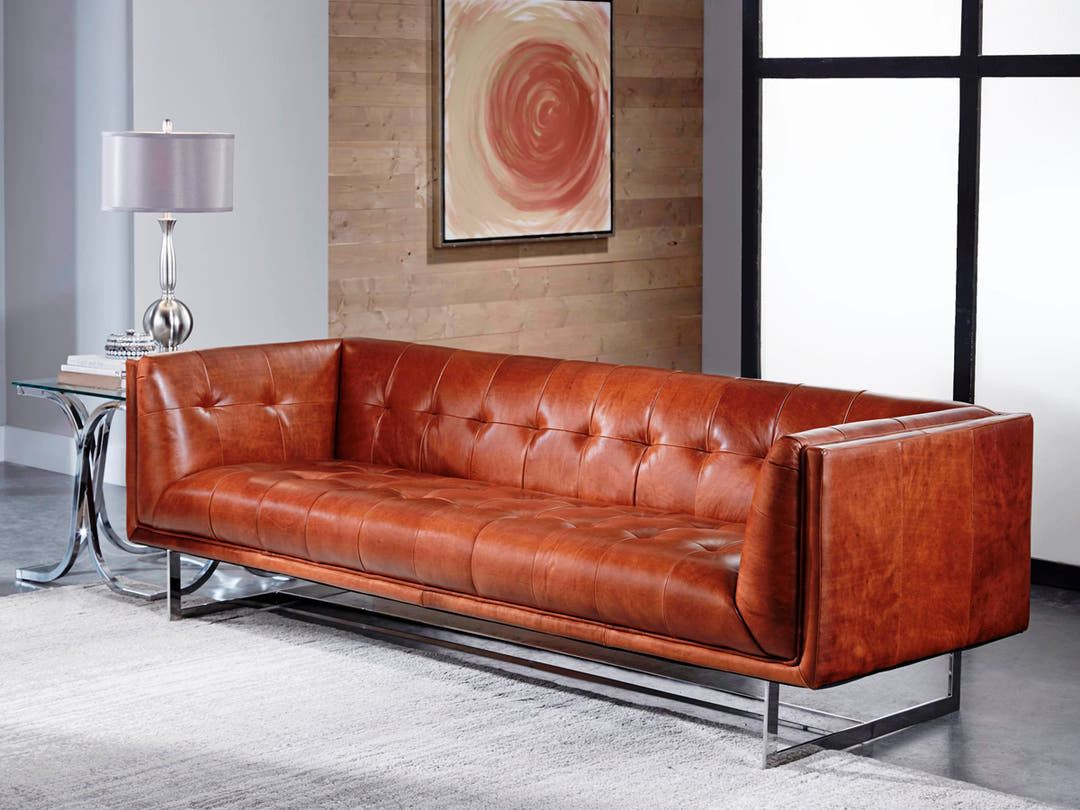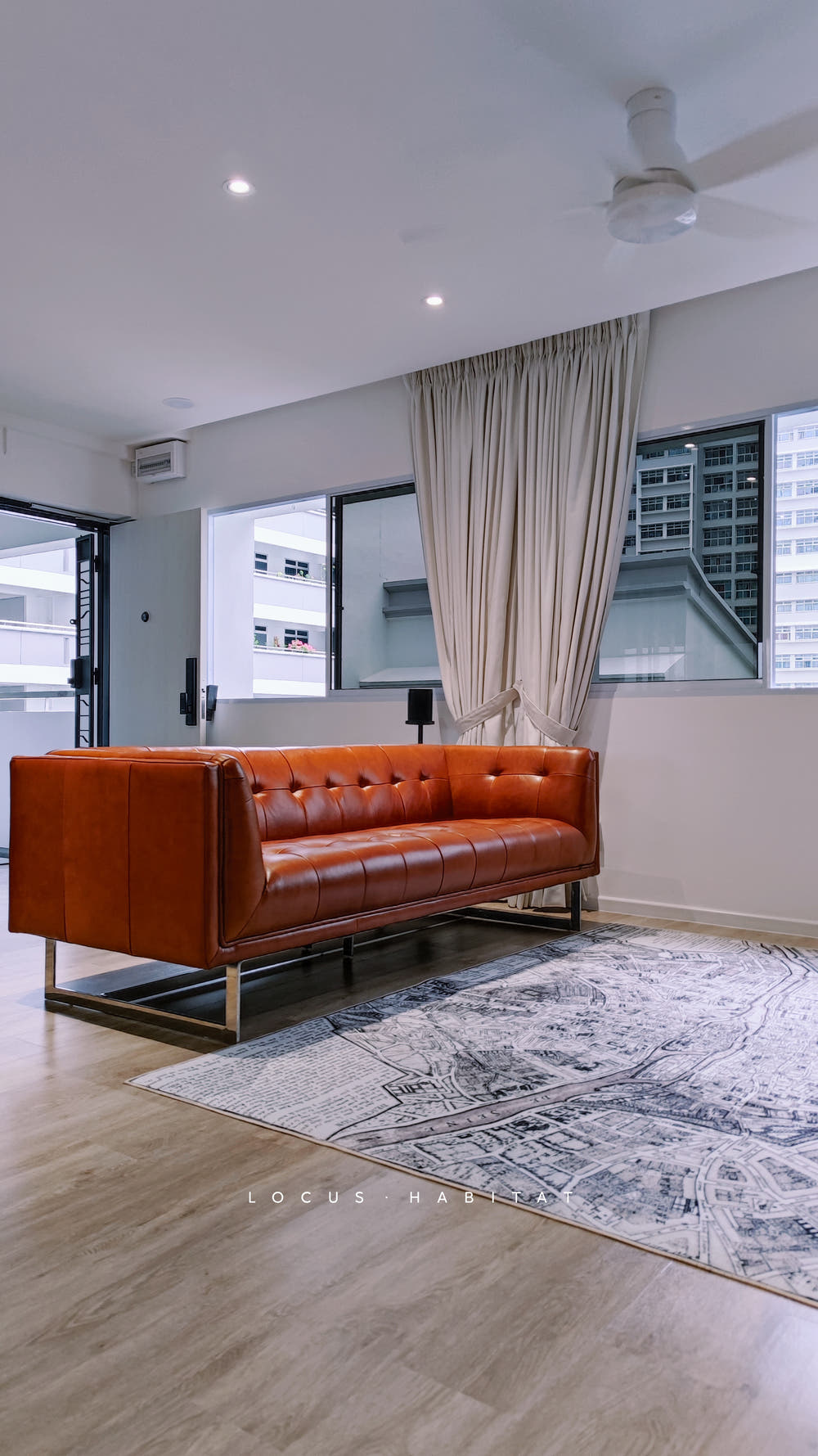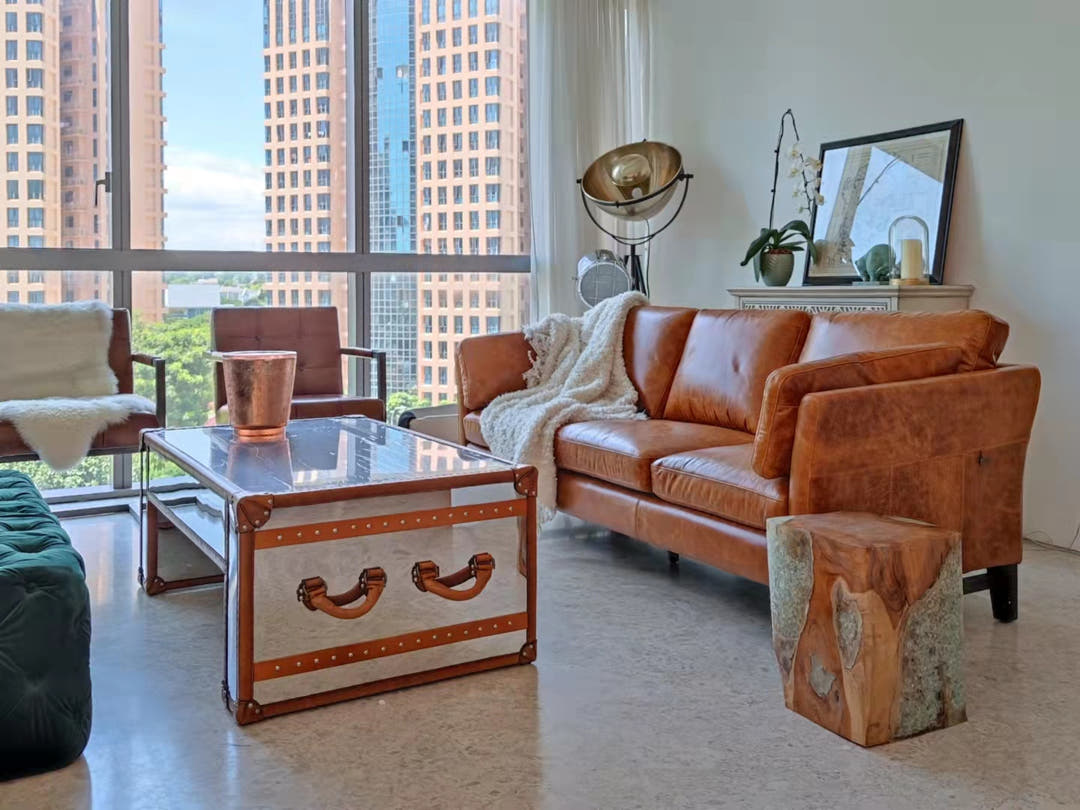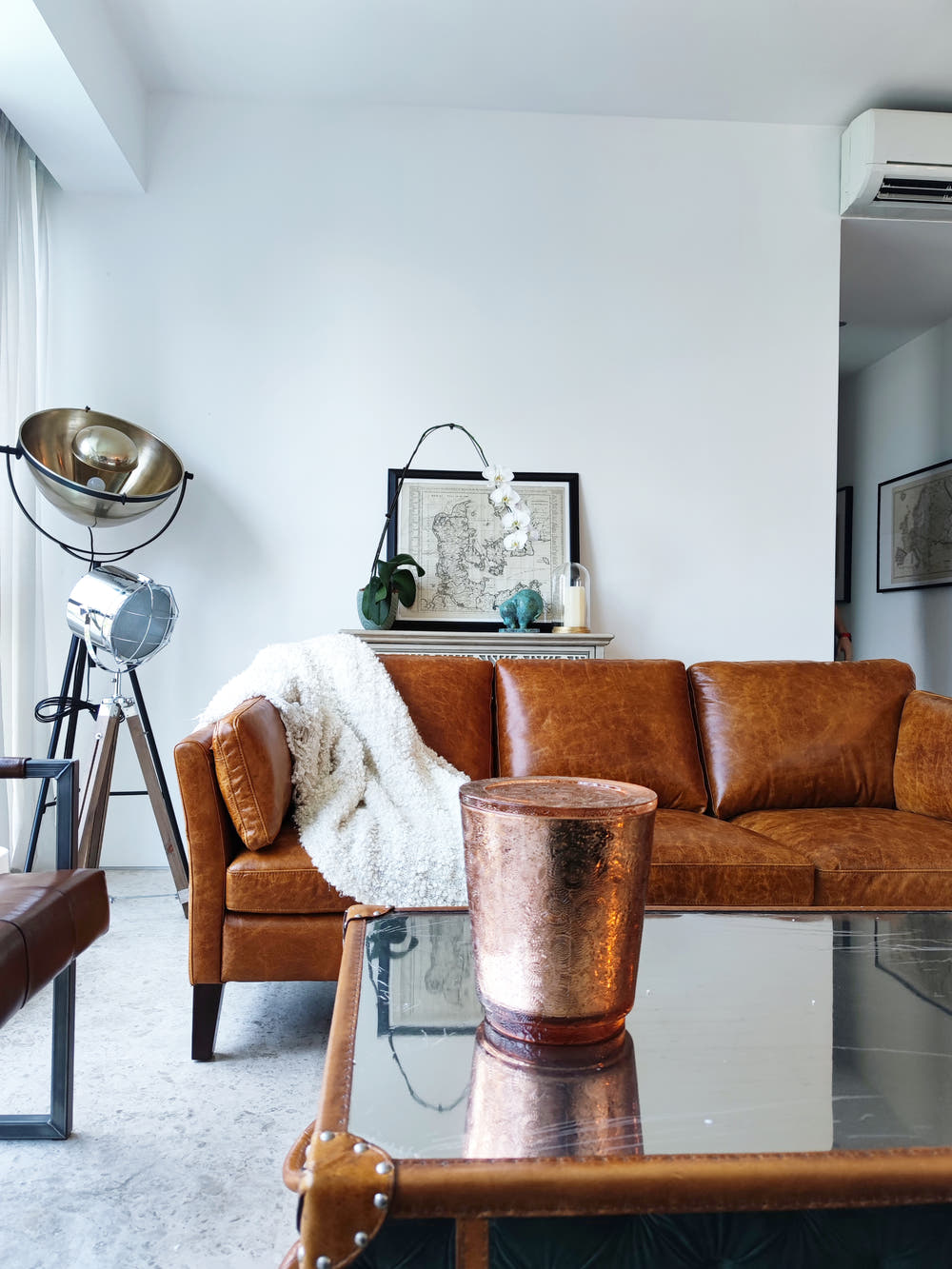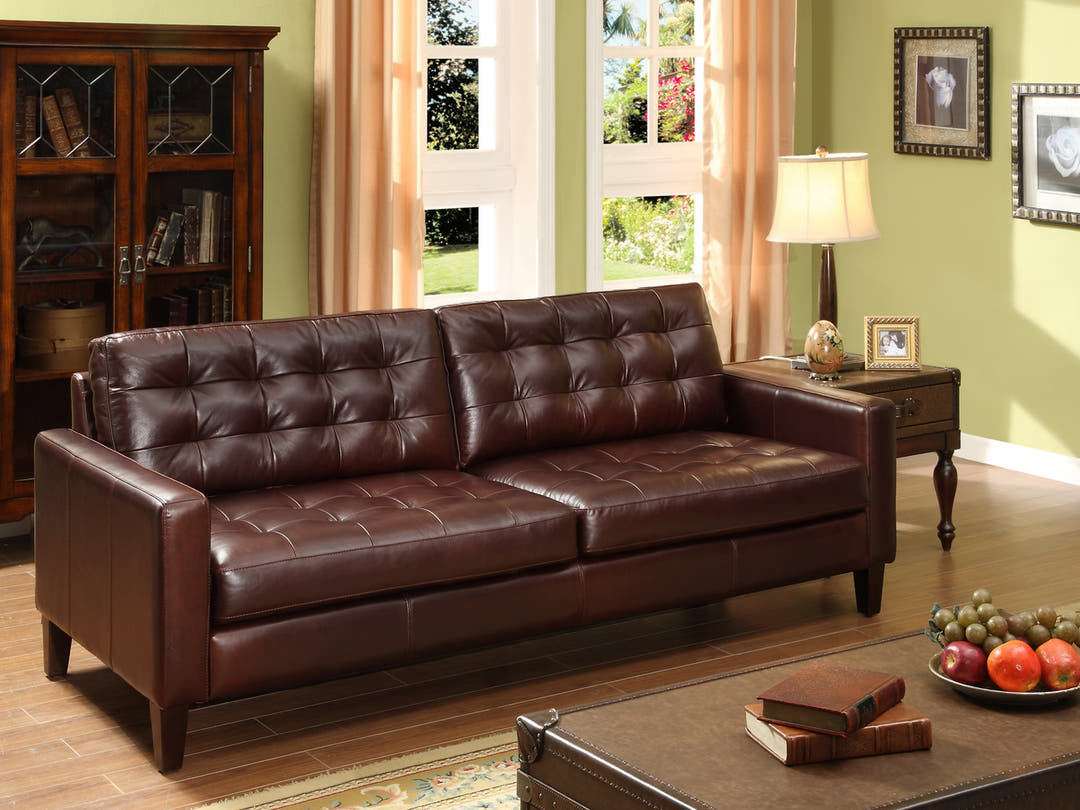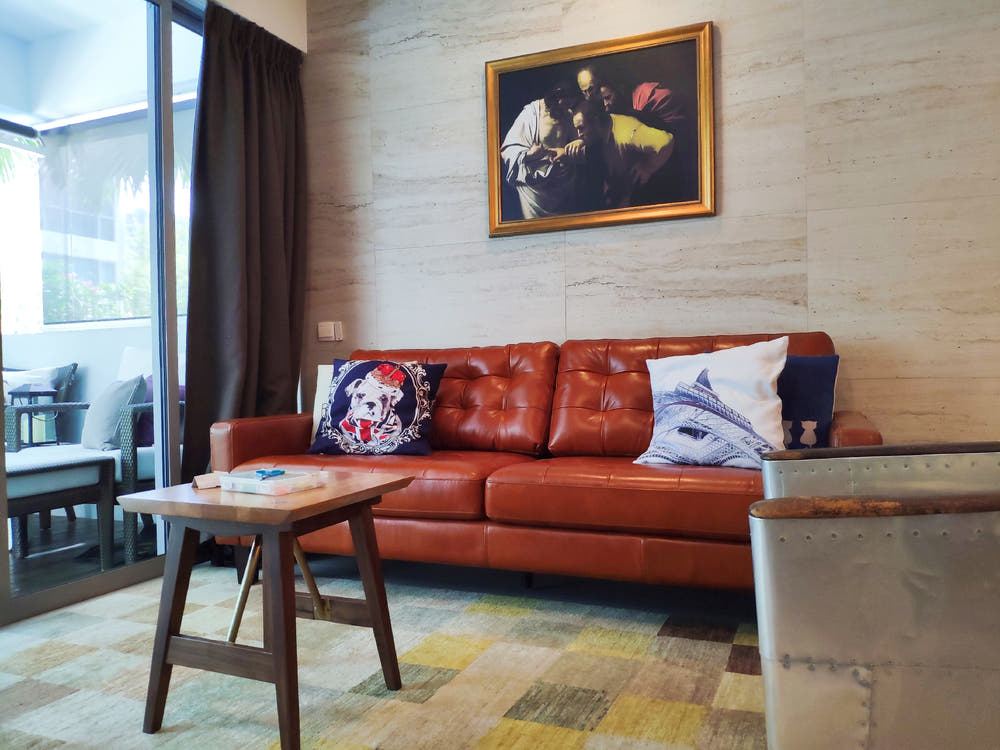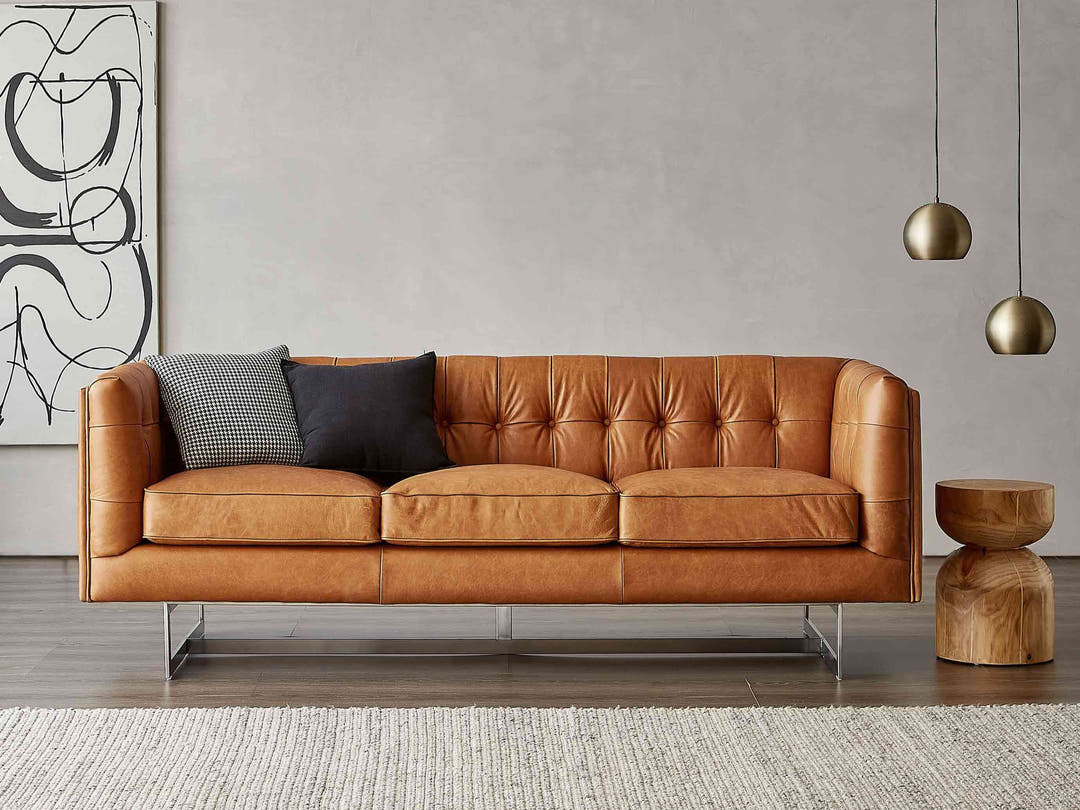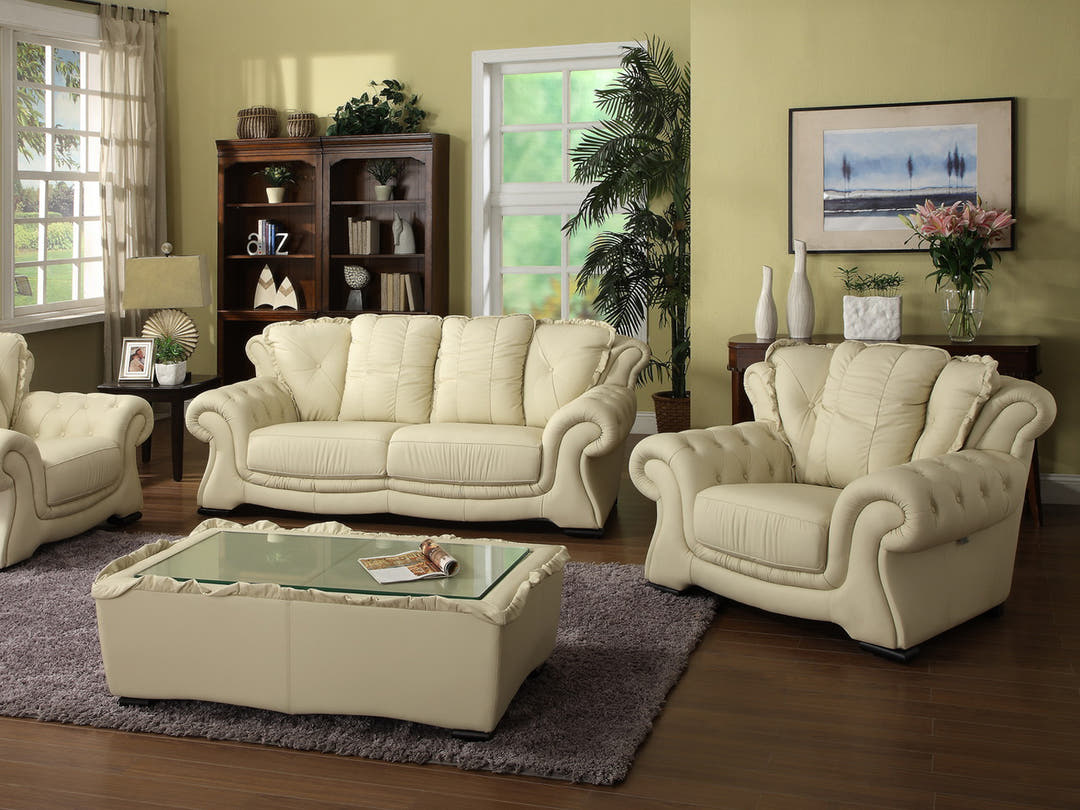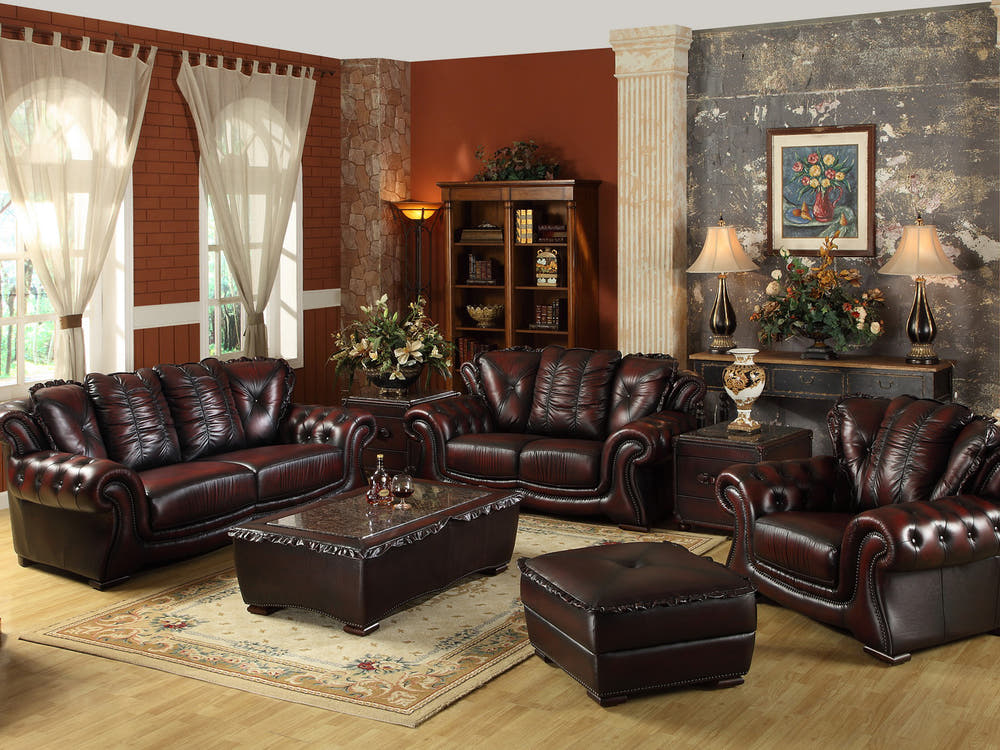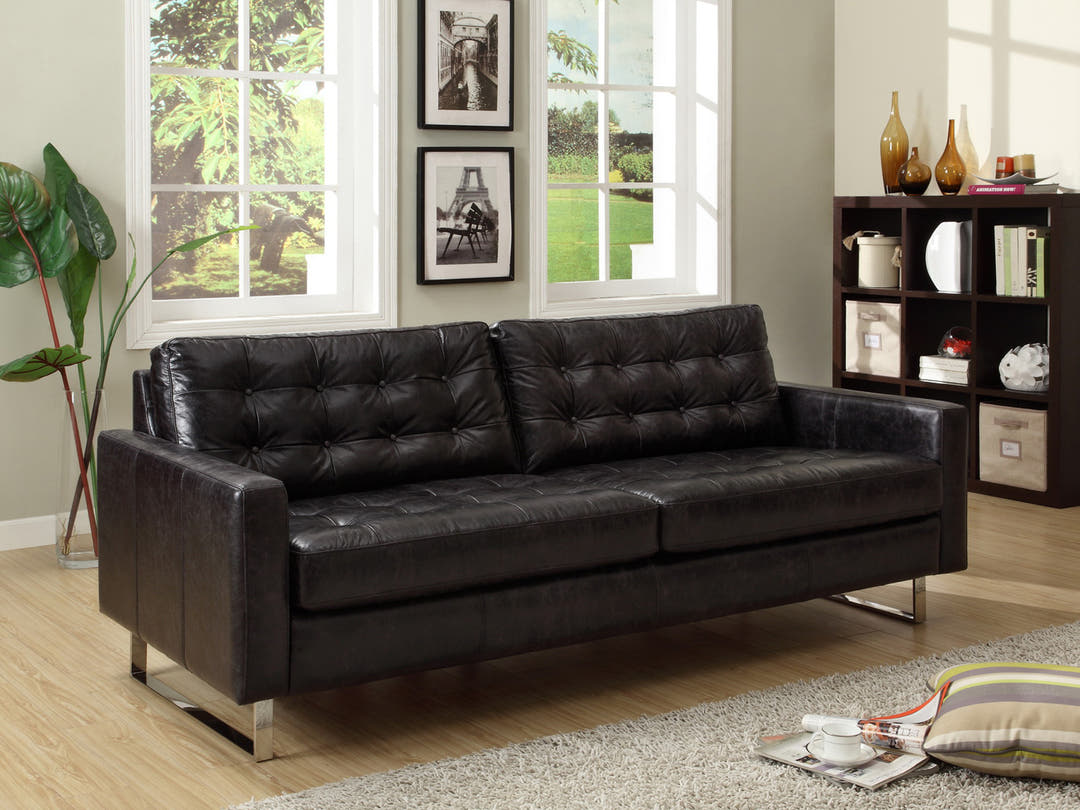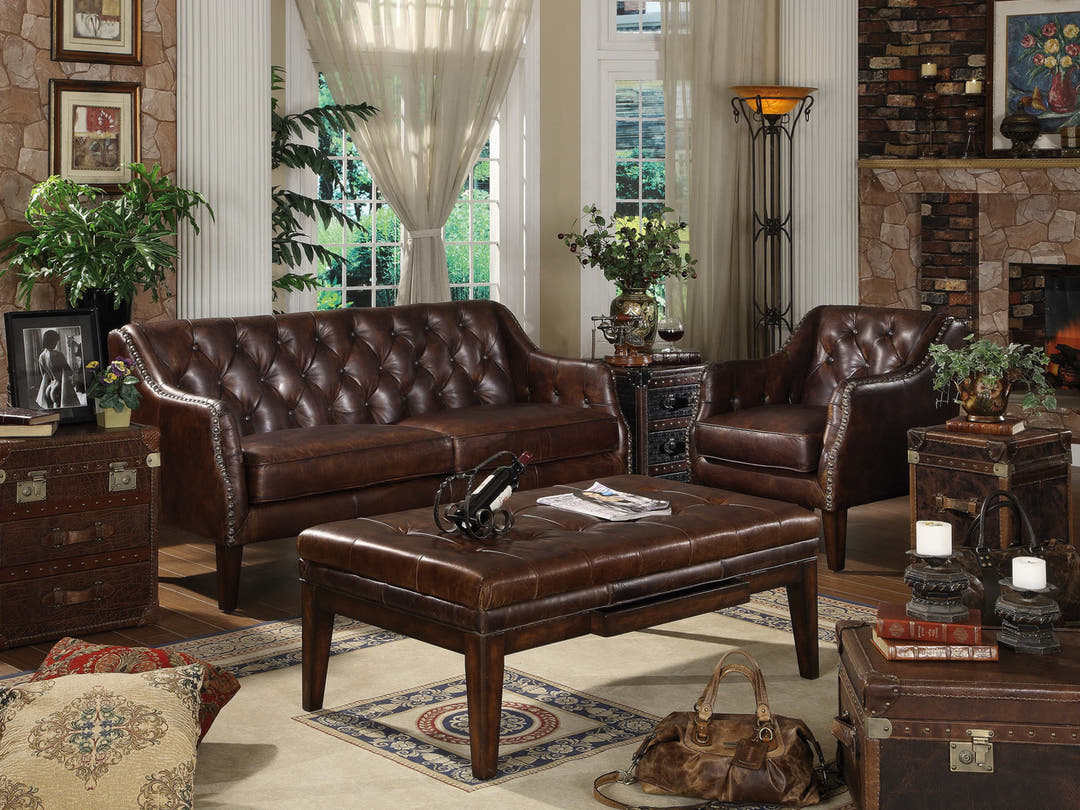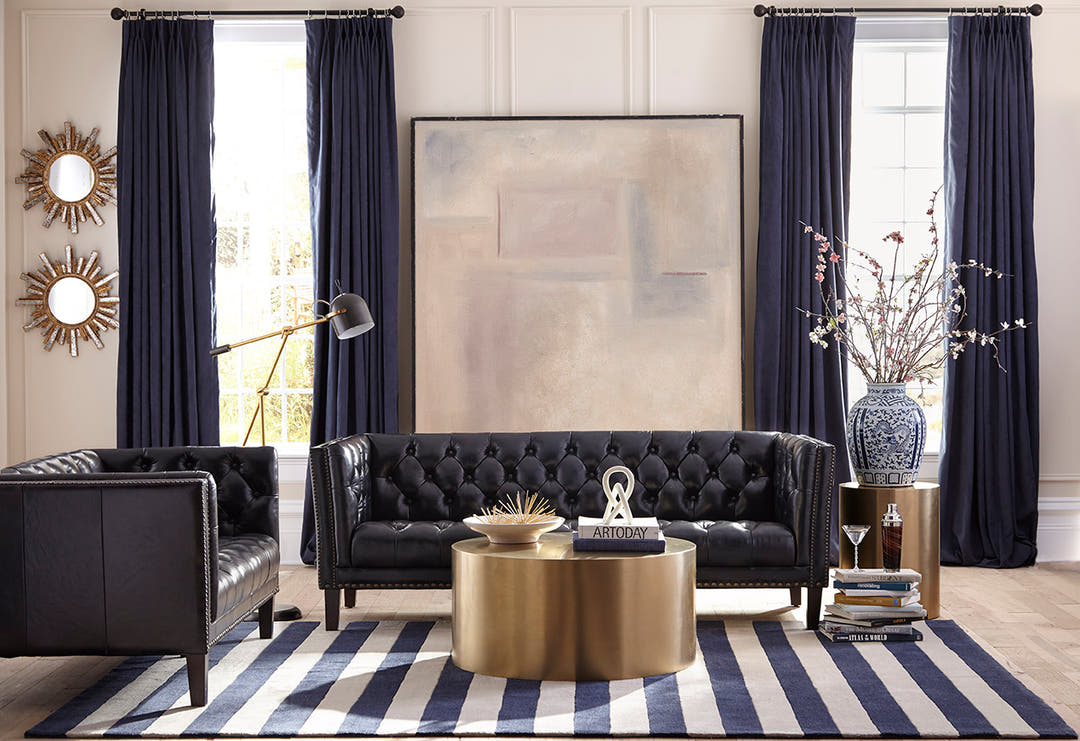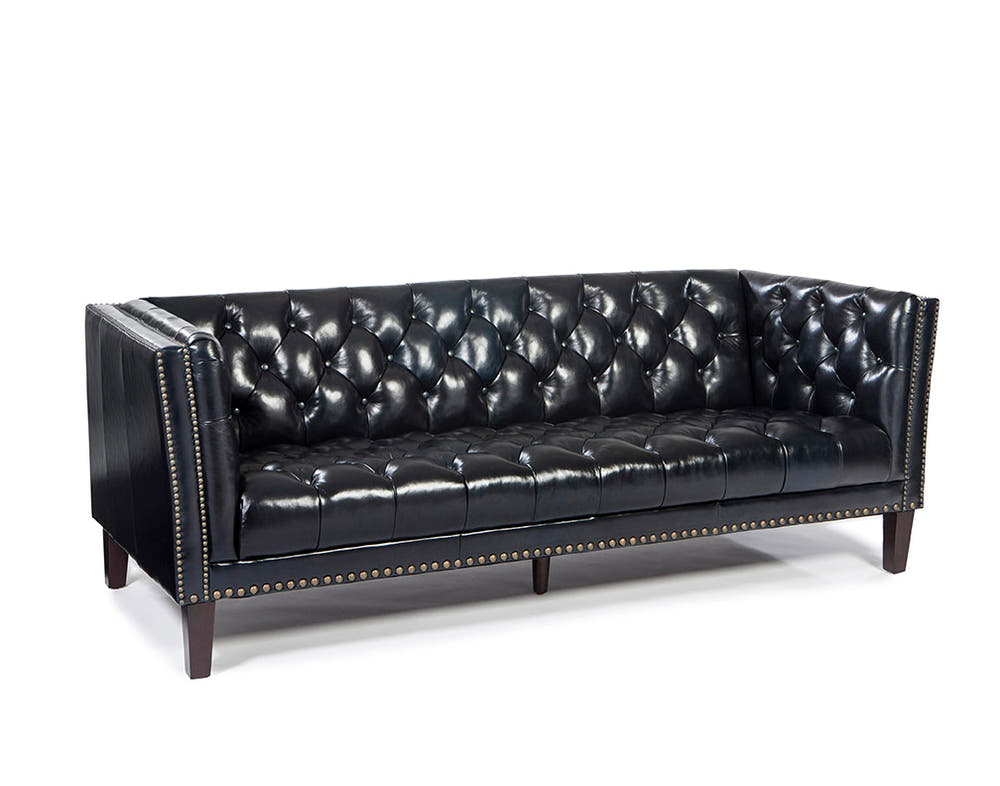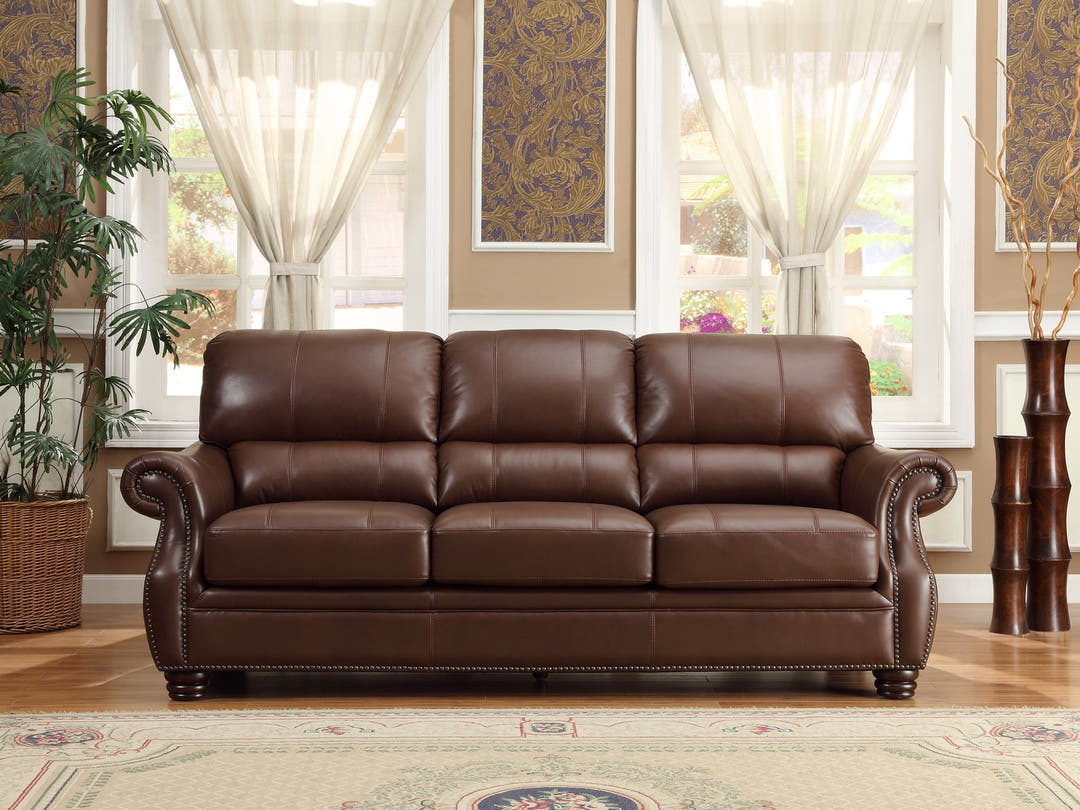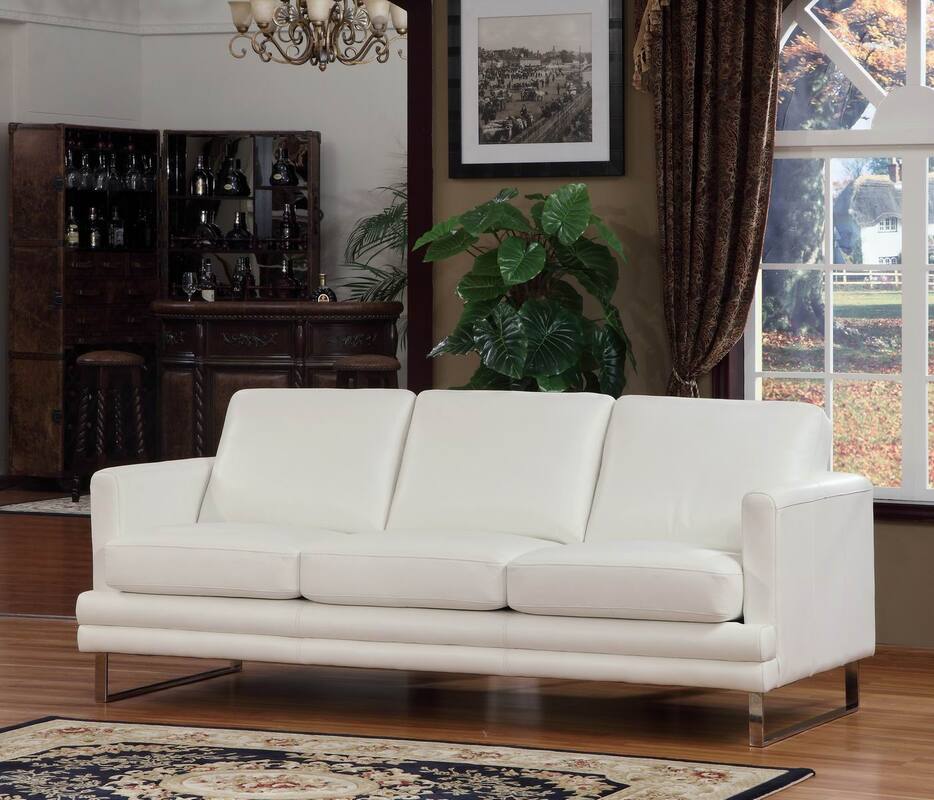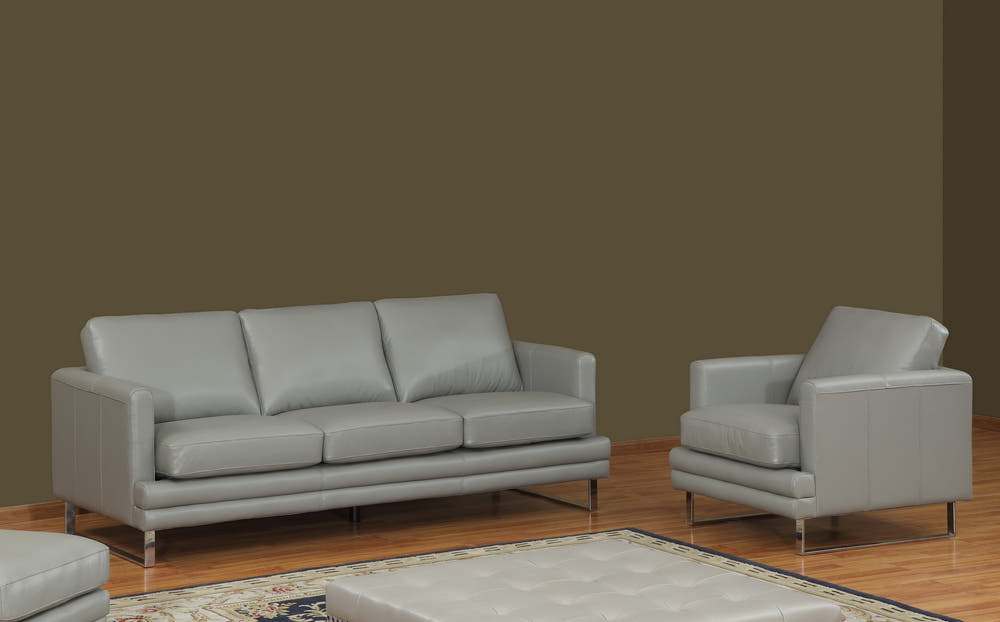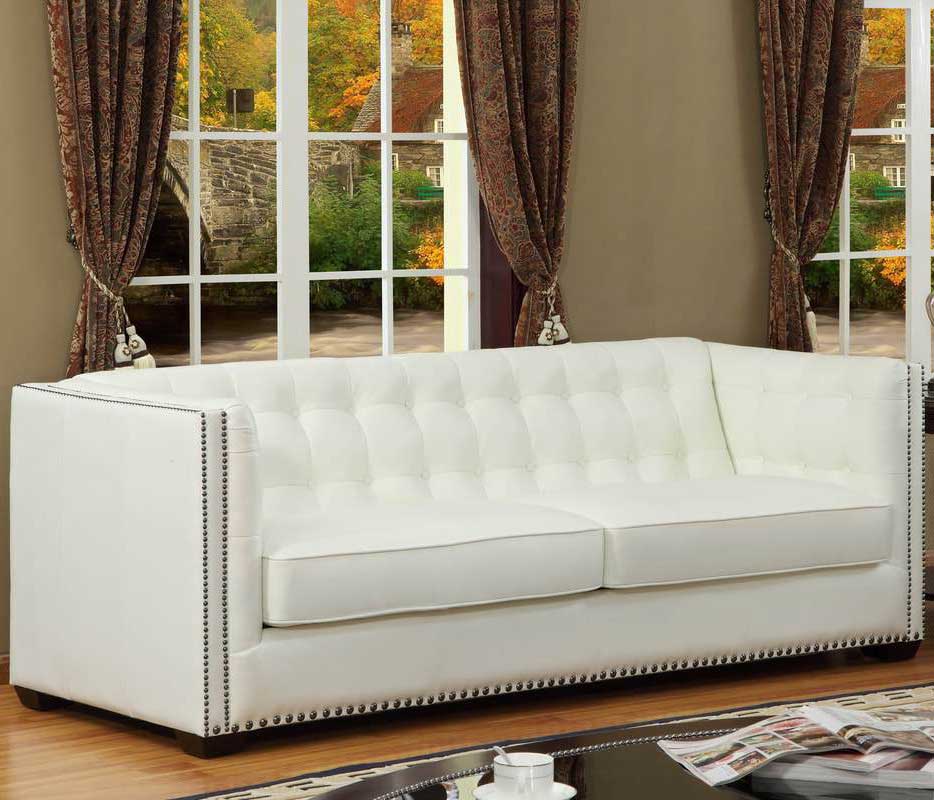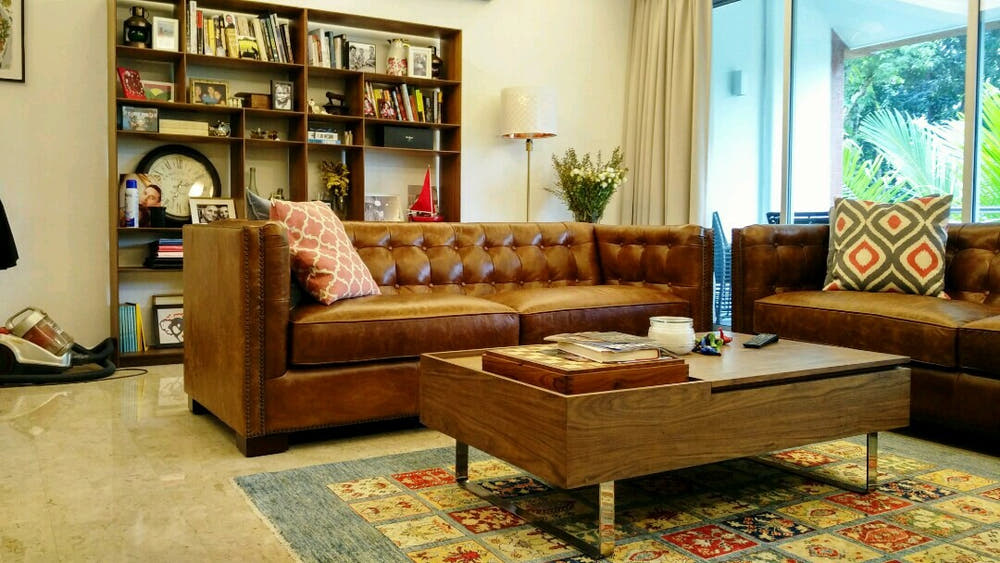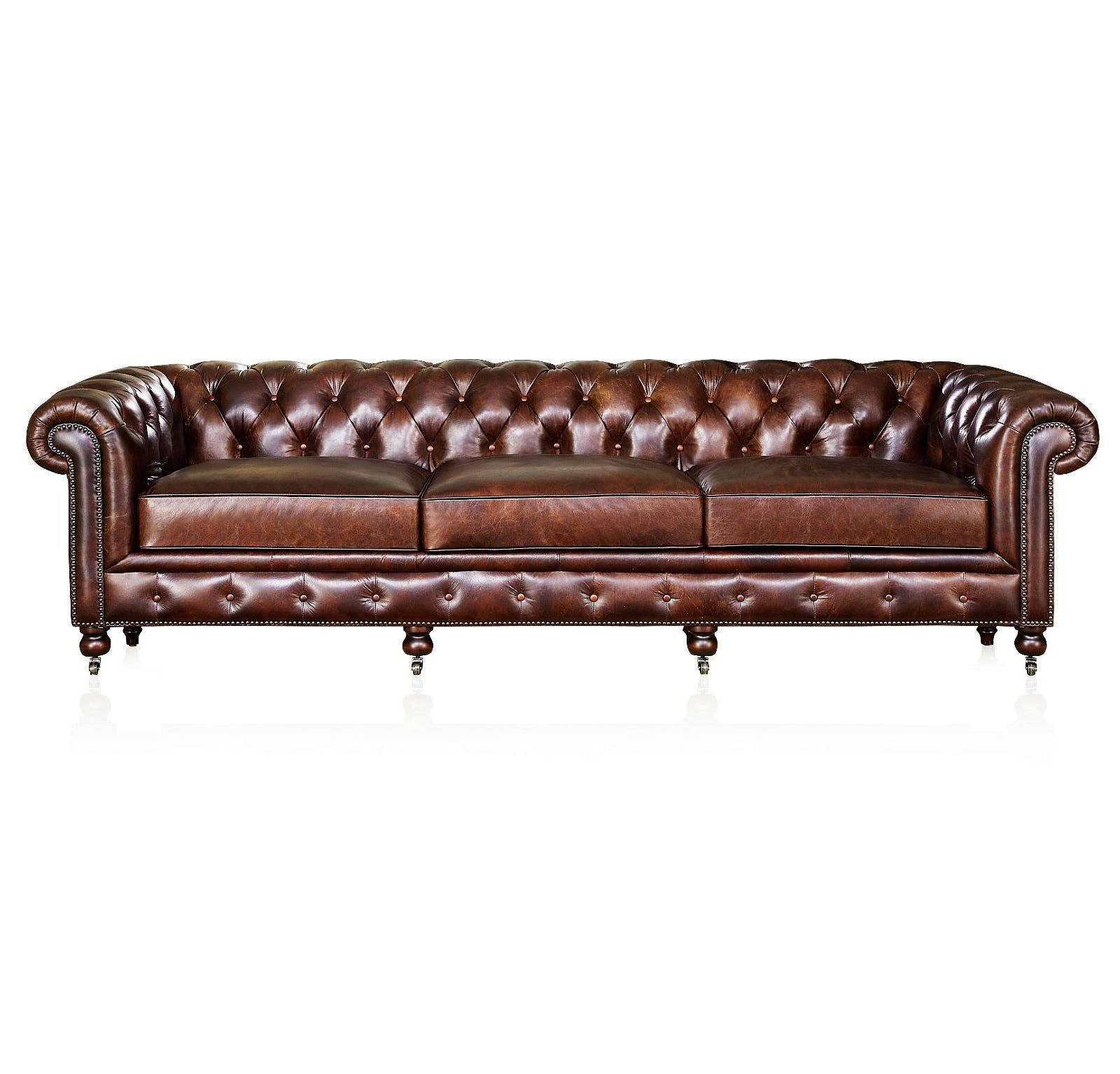The Timeless Allure of the Green Leather Sofa: History, Craftsmanship, and the Legacy of Elegance
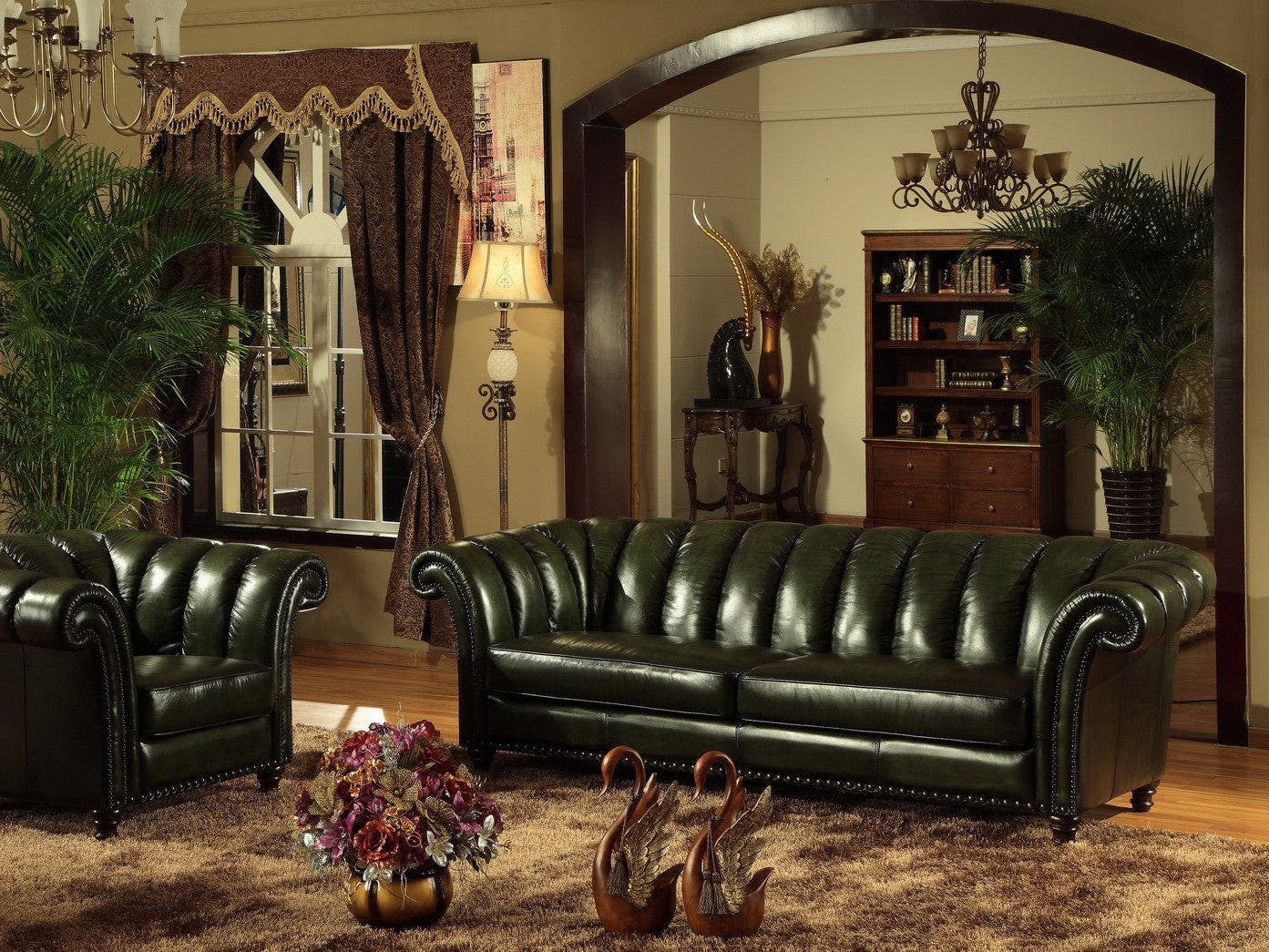
1. Introduction — A Heritage Reimagined
Among the many icons of interior design, few pieces command presence like the green leather sofa. Whether it’s a deep-buttoned Chesterfield or a hand-carved Victorian masterpiece, its blend of rich texture, noble color, and timeless craftsmanship instantly evokes dignity and sophistication. Green leather has long symbolized calm authority — a color that bridges the natural and the regal, the tranquil and the powerful.
In today’s design landscape, where synthetic materials and fleeting trends dominate, genuine green leather sofas remind us of something enduring — the artistry of natural leather, the weight of heritage, and the deep emotional warmth that only handcrafted materials can convey.
2. The Historical Roots of Green Leather in Iconic Venues
The British Parliament — Where Tradition Meets Authority
One of the earliest and most famous venues to feature green leather seating is the House of Commons in the British Parliament. Every bench in this historic chamber is upholstered in dark green leather — a choice rooted in both symbolism and practicality.
Green, associated with harmony and renewal, was believed to calm tempers during heated debates. More importantly, it signified continuity — linking Parliament’s democratic roots to the pastoral landscapes of Britain. The color’s durability under candlelight and gas lamps made it ideal for 19th-century halls where prestige met practicality.
Thus, the “green benches” became a metaphor for the House itself — so much so that “across the green benches” remains a phrase synonymous with parliamentary discourse.

Gentlemen’s Clubs and Private Libraries
By the late 1800s, green leather furniture had migrated from government halls to private clubs and libraries across London. The smoky lounges of St. James’s, where men debated philosophy and empire over brandy and cigars, often featured dark green Chesterfield sofas — their waxed leather glowing under amber lamplight.
The tone was deliberate: green leather balanced the rich mahogany paneling and brass fixtures, while the material itself — supple yet strong — reflected masculine refinement. These interiors embodied a world where decor was more than decoration; it was an assertion of character, intellect, and lineage.
European Studies and Art Deco Salons
On the Continent, green leather soon appeared in aristocratic studies and Art Deco salons, representing intellect and prosperity. French and Italian craftsmen refined the art of hand-rubbed antique finishes, achieving gradients of color that shifted from forest to olive depending on light.
By the early 20th century, the green leather sofa had become an international language of cultured taste — present in universities, embassies, and even ocean-liner salons.
3. The Meaning Behind the Color Green
Why green? In color psychology, green stands for balance, renewal, and calm strength. It sits between warm and cool tones, creating a sense of stability. That’s why green has been favored in environments requiring composure — from courtrooms to libraries.
Symbolism and Authority
In historical interiors, red often symbolized royalty and energy, while blue suggested faith and serenity. Green, however, was the color of governance — commanding yet approachable. The British Parliament’s green benches contrast deliberately with the House of Lords’ red seats, marking the lower chamber’s accessibility to the common people.
Natural Harmony
From an aesthetic perspective, green complements natural materials — wood, brass, and wool — in a way few colors can. When paired with dark walnut or mahogany frames, as in many Victorian and Edwardian designs, it evokes nature within architecture — the forest brought indoors.
4. Types of Leather — From Painted Prints to Hand-Rubbed Masterpieces
Not all “leather” is created equal. The type of hide and finishing technique dramatically affect the look, feel, and longevity of a sofa.
Painted or Embossed Leather
Most mass-market sofas today use painted embossed leather, where pigment is sprayed on and the surface is printed to mimic natural grain. While inexpensive and visually uniform, this leather lacks the natural depth and breathing texture of traditional tanning.
Waxed Oil Leather
A step higher is waxed oil leather, known for its buttery hand-feel and ability to develop a living patina. Oils and waxes are hand-applied to the hide, enhancing both color richness and flexibility. Scratches can often be buffed out simply by rubbing the area — a sign of authenticity.
Antique Hand-Rubbed Leather
At the top tier lies antique hand-rubbed leather — the hallmark of old-world craftsmanship. Skilled artisans manually apply layers of translucent dyes and waxes, gradually building depth until the surface glows like aged marble. Each piece is unique; the natural imperfections of the hide become part of its story.
This finish, especially in deep olive or bottle-green tones, defines the most coveted green leather sofas in the world — those that age gracefully over decades, not years.
5. Traditional Techniques in Green Leather Making
The Hand-Rubbing Process
Unlike factory-painted leathers, hand-rubbed hides undergo multiple polishing stages. Craftsmen apply waxes by hand, then gently heat and buff the surface to draw out color variations. The result is a naturally “antiqued” depth impossible to replicate with machines.
Waxing and Conditioning
Traditional waxed leathers rely on beeswax, lanolin, or carnauba oils — natural conditioners that enhance water resistance while keeping the surface supple. Over time, the wax oxidizes slightly, enriching the tone from fresh olive to deep forest.
Natural Dyeing
Before synthetic dyes existed, artisans used vegetable tannins and plant-based pigments — oak bark, indigo, or green iron oxide — to achieve subtle hues. Today’s premium tanneries still honor this method, producing eco-friendly full-grain leather with unparalleled aging behavior.
The Evolution of Patina
A true hallmark of quality leather is how it ages. Each crease, polish, and touch adds character. In green leather, the patina reveals golden undertones that glow under ambient light — a dynamic finish cherished by collectors and interior designers alike.
6. Iconic Sofa Designs in Green Leather
Victorian-Style Hand-Carved Sofa (Model LH9109)
Seen in classic salons and royal drawing rooms, the Victorian-style green leather sofa remains one of the most intricate expressions of craftsmanship. Its frame is carved from solid wood — often mahogany or walnut — with scroll arms and claw feet that symbolize wealth and permanence.
The upholstery combines deep button tufting with hand-rubbed antique leather, producing a reflective sheen that pairs perfectly with baroque decor. Every curve, stitch, and stud embodies the grandeur of the 19th century — when furniture was as much art as function.
Classic Chesterfield Sofa (Model LH1007)
No discussion of green leather is complete without the Chesterfield, the quintessential English sofa design. Characterized by rolled arms, equal back height, and deep buttoning, it originated in the homes of British aristocrats and gentlemen’s clubs.
In green leather, the Chesterfield achieves a rare balance of elegance and approachability. Its oil-rubbed finish glows softly under warm light, while its silhouette — robust yet refined — complements both vintage and contemporary settings.
From university offices to boutique hotels, the Chesterfield continues to define timeless sophistication.
7. Why Green Leather Sofas Endure in Modern Interiors
Contrast and Depth
Modern minimalism often relies on neutral tones — white, beige, grey. Introducing a green leather sofa adds instant depth without overpowering the palette. The color acts as an anchor, providing visual stability amid clean architectural lines.
Sustainability Through Longevity
Unlike synthetic alternatives that peel or crack, full-grain hand-rubbed leather can last decades, even centuries, when properly cared for. A green leather sofa is not merely a purchase — it’s an investment in craftsmanship and sustainability.
The longer you own it, the more it rewards you with beauty.
Warmth in Modern Luxury
Contemporary designers rediscover green as the “new neutral.” It harmonizes effortlessly with marble, brass, and natural wood, creating interiors that feel both opulent and organic. In a world saturated with fast-changing trends, the green leather sofa remains constant — elegant, dependable, and rich in heritage.
8. Care and Maintenance of Premium Green Leather
Even the finest leather benefits from gentle maintenance. Here are essential tips to preserve its beauty:
-
Avoid Direct Sunlight – Continuous exposure fades natural dyes.
-
Regular Conditioning – Apply a neutral wax or lanolin-based conditioner every 6–12 months.
-
Clean with a Damp Cloth Only – Never use alcohol or harsh chemicals; a soft cloth keeps the natural oils intact.
-
Buff Scratches Gently – Waxed oil leather self-heals through light rubbing.
-
Let It Age Gracefully – The patina is part of its charm; over-polishing can erase character.
With such care, your green leather sofa will outlast most modern furniture — a living heirloom that matures in beauty year after year.
9. Green Leather as a Statement of Legacy
The Language of Prestige
For centuries, green leather seating has signified leadership, wisdom, and continuity. From the British Parliament’s iconic benches to the library armchairs of Oxford and Cambridge, green leather denotes intellect tempered by tradition.
A Bridge Between Eras
Owning a green leather sofa today is more than a design decision — it’s a statement of values. It bridges generations: the heritage of Victorian craftsmanship and the sensibilities of sustainable modern living.
Each time you sink into a hand-rubbed Chesterfield or Victorian sofa, you participate in a history that honors patience, skill, and authenticity.
10. Where to Experience Authentic Craftsmanship — Locus Habitat, Singapore
For those who seek more than just furniture, Locus Habitat offers a living connection to this tradition.
Founded in Singapore, Locus Habitat preserves the artistry of full-grain waxed and antique hand-rubbed leather, producing sofas that age beautifully — just like the heritage pieces found in Britain’s historic institutions.
Their Victorian Heritage Collection and Bison Chester Series exemplify the very ideals discussed here: genuine materials, hand-finished details, and a respect for timeless design. Each piece is crafted to bring warmth, texture, and legacy into modern living spaces.
Explore handcrafted green leather sofas at Locus Habitat, Singapore — where tradition meets contemporary elegance.




